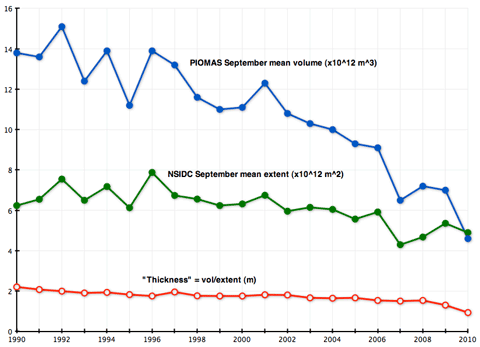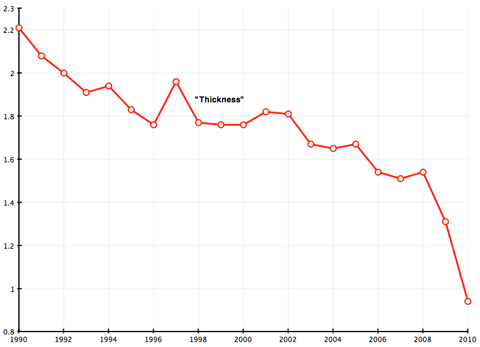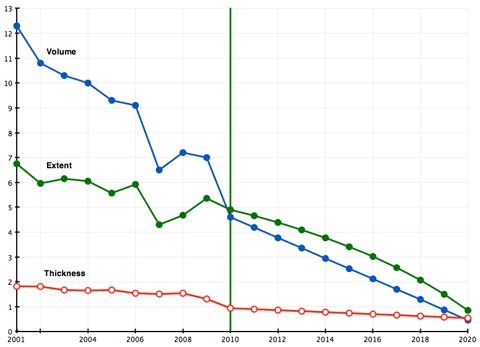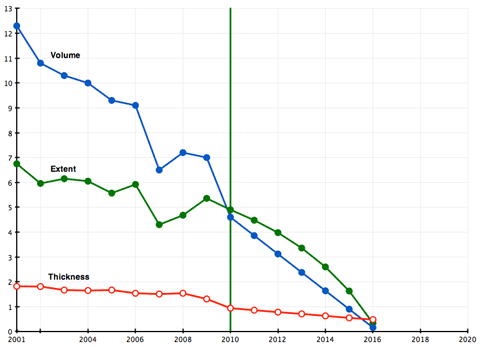Polar Ice Cap: 5 years left?
Posted: 19 Oct 2010, 10:22
Here is a 'Hot Topic' article from NZ on the polar ice cap and future trends:
Graphs
1) Sea ice volume & thickness:

2) Thickness (exploded scale):

3) Forward plots based on data since 1990:


ArticleBottom line: if the relationship between ice volume and extent evident in the NSIDC and PIOMAS data over the last 21 years continues in the near future, then the Arctic will be effectively ice-free in late summer sometime between 2015 and 2020. One interesting observation: the 10 year trend chart above suggests that 2007′s record minimum extent could remain unbroken next year, and the ice would still be on course to disappear within five years. If there’s any upside at all to this message (and I’m struggling to find one) it is perhaps that such a rapid and visible loss of sea ice might finally persuade the international community to take urgent action to reduce the atmospheric carbon load. What a seasonally ice-free Arctic might mean for global climate is something I shall look into a future post.
Graphs
1) Sea ice volume & thickness:

2) Thickness (exploded scale):

3) Forward plots based on data since 1990:

4) Forward plots based on data since 2000:By 2020 September average sea ice extent is reduced to 850,000 km2. The following year (not plotted) it reaches a minimum of 90,000 km2. In other words, if the rate of reduction of ice volume continues at the average rate of the last 21 years, the Arctic will be ice free in summer by 2021.

I look forward to reading his interpretation of 'what a seasonally ice-free Arctic might mean for global climate' will be.If these trends continue, then September ice extent dips below 2 million km2 in 2015, before all but disappearing in 2016.
